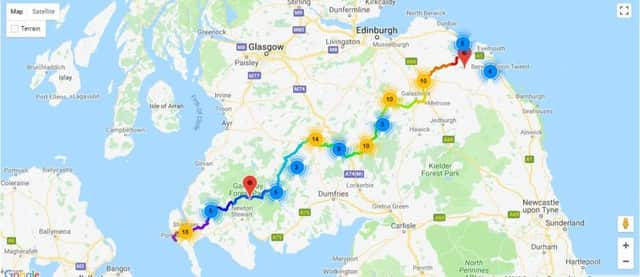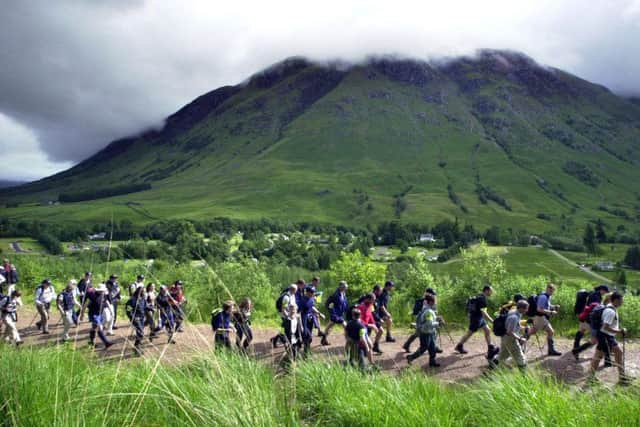Everything you need to know about walking the Southern Upland Way


What is it?
The Southern Upland Way, which opened in 1984, is Scotland’s first and only official 212-mile coast to coast trek from Portpatrick in the west to Cockburnspath in the east.
How long does it take?


Most walkers take between 10-20 days to complete the route although the length of time required will depend on the fitness of the party, the weather and how many pit stops are taken.
Where to stay
Advertisement
Hide AdWild camping is allowed along the entire route, but campers should follow advice in the Outdoor Access Code and not camp in enclosed fields, near livestock or next to buildings. Litter should be tidied away and, if you want to light a fire, landowners consent will be required due to the large volume of woodland.
If you’d rather not camp, there are many B&B’s, bothies, lodges and hotels along the way, which is ideal for long stretches between Bargrennan and St John’s Tower of Dalry.
Where to eat
The hotel’s and B&B’s on route offer a range of dining options, or there’s pubs on the way that are ideal for a lunch pit stop.
Wanlockhead has a few bed and breakfasts and and inn. There’s also a mining museum and tearoom, which are open in the summer.
Beattock has a hotel and a B&B but the nearby town of Moffat offers more in terms of places to eat and drink.
Melrose is also a good place to stop for dinner or lunch, as is Lauder.
Interesting history spots
Advertisement
Hide AdThe Borders is home to many ruined fortified towers, such as Dryhope Tower, many of which can been seen on route.
Warlockhead also has many former lead mines and a dedicated Museum of Lead Mining, which holds guided tours.
Advertisement
Hide AdBetween Innerleith and Galashiels, walkers will see three giant stone cairns known as the Three Brethren. Built in the 16th century, they were used by the Lairds of Selkirk to mark the boundaries of their lands.
There’s another two monuments further along the Way. These are known as Twin Law, are thought to commemorate the death of two brothers, and can been seen on the way from Melrose. Whilst the cairns are from the middle ages, they were destroyed by Polish tanks during training exercises in World War II.
In 2002 art was introduced to the route, with many displays and sculptures still visible along the way. One of the largest art installations is Galloway Forest Park’s Giant Axe Head – a massive polished stone slab covered with runes.
Best view points
The Way is full of wonderful sights, from artwork to historical ruins and castles, but the best view are of the landscape.
At the start of the route, the coastal views out to the North Channel, Knock Bay and cliffs are beautiful.
There’s a few lochs along the way but St Mary’s Loch is an ideal place to stop to enjoy the tranquil atmosphere and lovely views.
Advertisement
Hide AdThe summit of Benbrack is the highest point on the Southern Upland Way, and offers panoramic views of the Galloway Hills.
The walk from Sanquhar to Overfingland also offers idyllic views as this is the highest route and covers the rolling hills of Lowthers.
Kit required
Advertisement
Hide AdGood walking boots, waterproofs, fleece, layers of clothing, water bottle, compass, midge/insect repellent, a hat and a map.
Can you bike it?
Many section of the route are great for mountain biking, with tracks ranging from forest roads to single track. Care must be taken as some areas are unsurfaced, grassy hillsides and there is also areas of peat bog that will become muddy and difficult to navigate especially in winter.
Best time of year to do it?
Although you can undertake the Southern Upland Way at any time, the best time is when the weather is at its driest (although Scotland can experience four seasons in one day!)
Between April and June is ideal, although the autumn will make for some stunning photographs.
